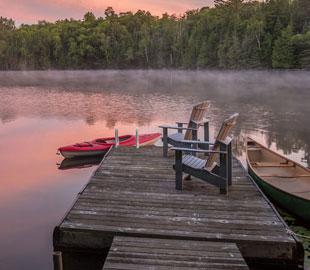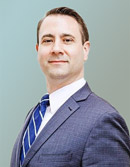Below you will find a real life case study of a couple who are looking for financial advice on how best to arrange their financial affairs. Their names and details have been changed to protect their identity. The Globe and Mail often seeks the advice of our VP, Wealth Advisor, Matthew Ardrey, to review and analyze the situation and then provide his solutions to the participants.
![]()
Written by:
Special to The Globe and Mail
Published May 24, 2019

François and Jacquie are wondering if they’re on track to retire at the age of 60 and still live comfortably. He is 54, she is 53. They have two children, ages 17 and 19.
François earns $105,000 a year before tax, while Jacquie earns $230,000. They both have defined contribution pension plans to which their employers contribute.
In the meantime, they want to pay off the home equity line of credit (HELOC) taken out to expand their Toronto bungalow. Their next project will be to landscape their yard. Their retirement spending goal is $70,000 a year after tax.
A key goal is to maintain the Muskoka-area cottage François and his sister inherited and pass it on to their children in turn. The cottage is self-sustaining, with rental income covering expenses, François writes in an e-mail. They also want to travel.
We asked Matthew Ardrey, a vice-president and financial planner at TriDelta Financial in Toronto, to look at Jacquie and François’ situation.
What the expert says
First, Mr. Ardrey looks at cash flow. Although their spending is taking up much of their income today, that will not be the case once their daughters have graduated from university, he notes. All postsecondary spending is anticipated to end by 2024.
François and Jacquie are aggressively paying down their HELOC – making regular monthly payments plus annual lump-sum ones – and plan to have it paid in full by mid-2020. When that is done, they will landscape their house for $30,000 and buy a new car for $60,000. “After that point, we assume excess cash flow will be saved toward their retirement.”
The surplus funds will go first to catch up with their tax-free savings account contributions. They will be caught up by 2022, after which they will contribute the maximum each year. The remaining surplus will go to a non-registered investment account.
François is saving $100 a month to his TFSA and Jacquie $300 to hers. François is also saving $917 a month to his RRSP and $533 to his defined contribution pension plan (DCPP), which is matched by his employer. Jacquie is saving $1,600 a month to her DCPP, with her employer contributing $610 a month. They also have $210 going to a registered education savings plan.
Jacquie and François plan to downsize their home when he is 70 and move into a condo that is half the value of their current home. They plan to begin taking Canada Pension Plan and Old Age Security benefits at 65.
Next, their investments. Based on the underlying asset mix (60-per-cent globally diversified equities and 40-per-cent Canadian and global bonds), they have a historical rate of return of 4.88 per cent. Their non-DCPP investments are invested primarily in “F”-class mutual funds with wrap account fees. The total fee is 1.99 per cent. (F-class funds have lower management expense ratios because they do not pay trailer fees to the adviser.) The planner assumes their pension assets will have the same asset mix when they retire. He uses an inflation rate of 2 per cent, retirement spending of $70,000 a year, including $10,000 a year for travel, and that both of them live to the age of 90.
“Based on these assumptions, they will have more than enough wealth to carry them through retirement,” Mr. Ardrey says. At Jacquie’s age 90, they will have an estate of $8.7-million, of which $4-million is in investments and $4.7-million is in real estate and personal effects. If they chose to spend the $4-million of investment assets, they could increase their spending by $4,000 a month or $48,000 a year.
“That being said, there is a significant tax liability remaining on the cottage when passing it to their two daughters,” Mr. Ardrey says. If the cottage rises in value along with inflation, there would be a $2-million capital gain on François’s half when he dies.
To effectively prepay the tax for their children, François could consider buying some permanent life insurance. The funds from the policy could be used to pay the taxes owing on the cottage and make it less likely the beneficiaries would need to sell it to pay the tax.
Depending on François’s health, this could be expensive, Mr. Ardrey says. But it would give François and Jacquie the freedom to spending their savings without worrying whether there will be enough left in their estate to pay the capital-gains tax.
By the time François and Jacquie retire in a few years, they will have about $2-million in investments. “Paying 2 per cent in investment costs and using mutual funds to execute their strategy is not the best plan,” Mr. Ardrey says.
Instead, they should consider hiring an investment counsellor to develop a well-rounded and lower-cost portfolio of large-cap stocks with strong dividends as well as corporate and government bonds. Investment counselling firms have a fiduciary duty – like a trustee – to act in the best interests of their clients.
If Jacquie and François wanted to diversity the bond portion of their portfolio to boost their returns, they could look into fixed-income securities not available to the average investor, Mr. Ardrey says. Like government bonds, these fixed-income alternatives tend to have little correlation to the stock market. “We would recommend carefully vetted private debt and income funds with solid track records.”
Client situation
The person: François, 54, Jacquie 53, and their children, 17 and 19
The problem: Can they retire at 60 with $70,000 after tax? Can they afford to keep the cottage in the family?
The plan: Retire as planned with a comfortable cushion. Consider taking out permanent insurance to help offset capital-gains tax that will be payable on François’s share of the family cottage when he dies. Review investment portfolio to lower costs and perhaps boost returns.
The payoff: Financial security with the option of spending more than planned.
Monthly net income: $17,100
Assets: His TFSA $6,000; her TFSA $15,000; his RRSP $351,000; her RRSP $227,000; market value of his DCPP $91,000; market value of her DCPP $350,000; RESP $77,000; residence $1.95-million; share of cottage $1.5-million. Total: $4.56-million
Monthly outlays: HELOC $3,480; property tax $760; property insurance $300; utilities $385; maintenance $100; transportation (insurance, fuel, maintenance for two cars) $930; grocery store $900; clothing $50; university expenses $800; additional HELOC (annual lump-sum payment divided by 12) $2,700; gifts, charity $220; vacation, travel $1,000; other discretionary $100; dining, drinks, entertainment $885; personal care $250; pets $100; dentists $50; life insurance $76; TV, internet $180; his RRSP $917; RESP $210; TFSAs $400; pension plan contributions $2,133. Total: $16,926
Liabilities: Line of credit $120,000
Want a free financial facelift? E-mail finfacelift@gmail.com.
Some details may be changed to protect the privacy of the persons profiled.

